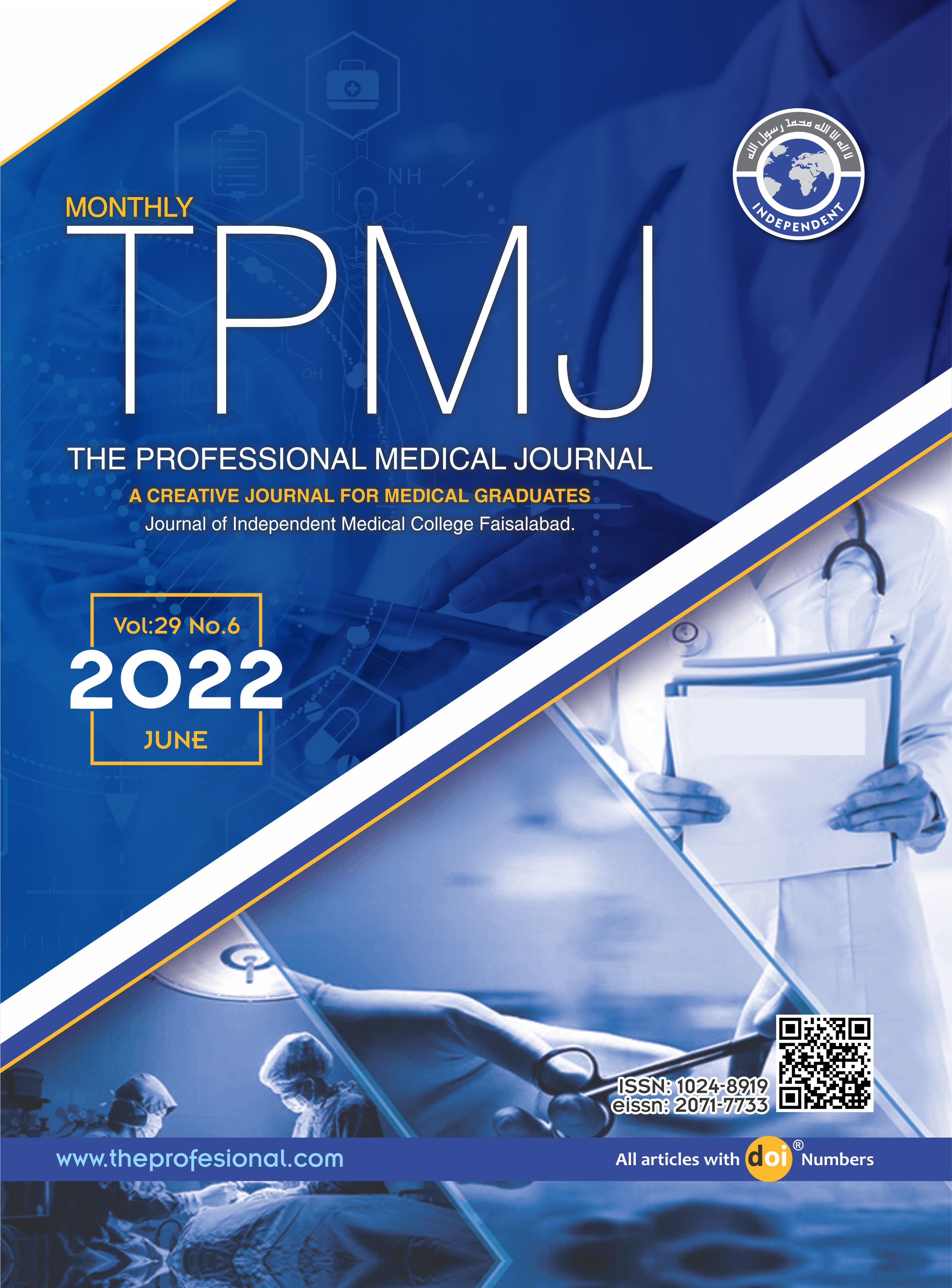Management of post-operative pain in patients undergoing abdominal hysterectomy, is the transversus abdominis block a reliable option?
DOI:
https://doi.org/10.29309/TPMJ/2022.29.06.4769Keywords:
Anesthesia, Abdominal Hysterectomy, Transverse Abdominal Pain BlockAbstract
Objective: To determine the efficacy of transverse abdominal block for patients undergoing abdominal hysterectomy. Study Design: Randomized Controlled Study. Setting: Ghulam Muhammad Mahar Medical College Hospital, Sukkur. Period: September 2018 to September 2019. Material & Methods: Included all females above the age of 18 years who were scheduled for abdominal hysterectomy. We excluded all the patients who have had a abdominal hysterectomy before, had malignancy, and had a hospital stay of less than 24 hours. All the patients receiving transverse abdominal pain block, had received an ultrasound guided block after the hysterectomy procedure, and was given 20 cc to 60 cc of 0.25% Bupivacaine, while the non-TAP group received standard narcotics as required. Results: We included a total of n= 66 patients, the mean age of the patients was found to be 47 +/- 8 years. There were no statistically significant differences in the two groups based on the patients age, length of hospital stay, time spent in the recovery room, and time duration of the surgical procedure. The average consumption of narcotics was lower during the procedure, at 24 hours after the procedure, and the length of hospital say was also low for the TAP group, however these were not statistically significant findings, the p values were 0.419, 0.533 and 0.754 respectively. Overall narcotic use and patient controlled analgesia also showed no statistically significant differences in the two groups, the p values were 0.252 and 0.669. The numeric pain rating scale also did not show any significant differences between the two groups. Conclusion: Transverse abdominal pain block failed to lower the narcotics requirement and failed to be a superior analgesic in patients undergoing abdominal hysterectomy.
Downloads
Published
Issue
Section
License
Copyright (c) 2022 The Professional Medical Journal

This work is licensed under a Creative Commons Attribution-NonCommercial 4.0 International License.


